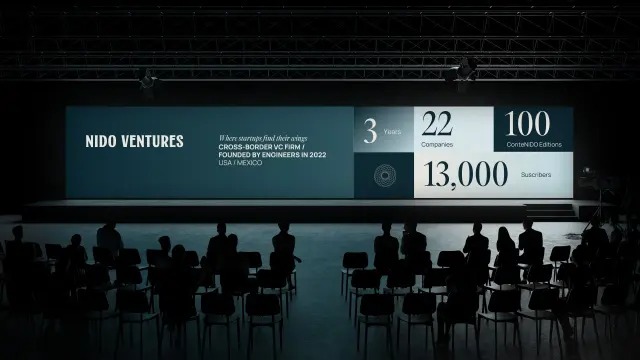Quantum computing is evolving fast, raising alarms for cybersecurity. Its power could break encryption that protects everything from emails to national secrets.
Quantum Computing Threatens Modern Encryption Standards
The race to build practical quantum computers is accelerating—and with it comes a rising cybersecurity panic. Experts warn that once quantum computers reach a certain level of power, they could break the cryptographic algorithms that safeguard digital infrastructure worldwide.
From banking to government defense systems, today’s internet relies on encryption that quantum computers might render obsolete in a matter of seconds.
What is Quantum Computing?
Quantum computing harnesses principles of quantum mechanics—such as superposition and entanglement—to perform calculations far beyond the reach of classical computers. While traditional computers use binary bits (0 or 1), quantum computers use
qubits, which can represent multiple states simultaneously.
This gives them
exponential power for certain computations—including factoring large numbers and solving mathematical problems that underpin most encryption.
Why It’s a Cybersecurity Nightmare
Most secure communication today depends on
public-key cryptography, specifically:
-
RSA (Rivest-Shamir-Adleman)
-
ECC (Elliptic Curve Cryptography)
-
DSA (Digital Signature Algorithm)
These systems rely on problems that are easy to verify but hard to solve—like factoring huge prime numbers. Classical computers would take
millions of years to crack them.
But a sufficiently powerful quantum computer could do it in
minutes, using
Shor’s Algorithm, which solves factoring problems exponentially faster.
What’s at Risk
Banking & Finance: TLS (HTTPS) certificates securing online transactions
Email & Messaging: End-to-end encryption used in platforms like Signal or ProtonMail
Blockchain: Wallets and smart contracts that rely on public-key encryption
Military & Intelligence: National secrets secured with RSA or ECC
IoT Devices: Millions of unsecured endpoints with embedded encryption
If quantum computers can break encryption, all of this data could be decrypted—
retroactively—meaning that intercepted data today could be decoded tomorrow.
Harvest Now, Decrypt Later
A rising threat model involves cybercriminals
intercepting encrypted data now, storing it, and waiting for quantum tech to evolve enough to break it. This is known as
"Harvest Now, Decrypt Later."
Nation-state actors are believed to already be stockpiling encrypted communications and intellectual property with this approach in mind.
Post-Quantum Cryptography (PQC)
To counter this threat, researchers and governments are developing
Post-Quantum Cryptography—encryption algorithms believed to resist quantum attacks.
The U.S. National Institute of Standards and Technology (NIST) is leading the charge, with finalists like:
-
CRYSTALS-Kyber (for key encapsulation)
-
CRYSTALS-Dilithium (for digital signatures)
-
FALCON and SPHINCS+
NIST is expected to release official standards for PQC in late 2025.
Are We Ready?
Despite ongoing efforts,
most of today’s infrastructure is not quantum-resistant. Transitioning global systems to PQC will be complex, expensive, and time-consuming.
Barriers include:
-
Legacy systems that can't be upgraded easily
-
Incompatibility with IoT devices
-
Lack of awareness in small-to-mid businesses
-
Uncertainty about which algorithms will stand the test of time
Cybersecurity professionals are calling for
early migration, even before quantum hardware becomes widely available.
Quantum-Resistant Solutions in Development
Big tech firms are already taking steps:
-
Google has begun experimenting with post-quantum TLS in Chrome.
-
IBM has released hybrid PQC software libraries.
-
Microsoft is integrating PQC support into Azure Key Vault.
Startups are also innovating in areas like
quantum key distribution (QKD)—a technique that uses quantum physics to exchange encryption keys securely.
What Organizations Can Do Now
Audit cryptographic systems to identify quantum-vulnerable algorithms.
Monitor NIST’s final PQC standards for implementation guidance.
Experiment with hybrid approaches (traditional + quantum-resistant).
Educate security teams and C-suite leadership on quantum threats.
Encrypt Less, Classify More: Don’t encrypt everything—protect what matters most.
Government & Regulatory Response
-
U.S. Quantum Computing Cybersecurity Preparedness Act (signed 2022) requires agencies to begin planning for PQC.
-
European Union is funding research through Horizon Europe and ENISA.
-
China is making rapid advances in both quantum hardware and communication networks.
This has turned quantum cybersecurity into a
geo-strategic arms race.
The Timeline: When Will It Happen?
Experts are divided:
-
Optimistic view: 10–15 years before quantum can break RSA-2048
-
Pessimistic view: 5 years or less, given rapid advances by companies like Google, IBM, and Chinese research labs
Regardless of timeline,
the time to prepare is now.
Conclusion
Quantum computing holds tremendous promise for science, medicine, and logistics—but it's also poised to upend the cybersecurity foundations of the internet. Whether the future arrives in five or fifteen years, the
quantum threat to encryption is no longer theoretical. It’s real, and it's coming.
The only question is:
Will we be ready in time?





























